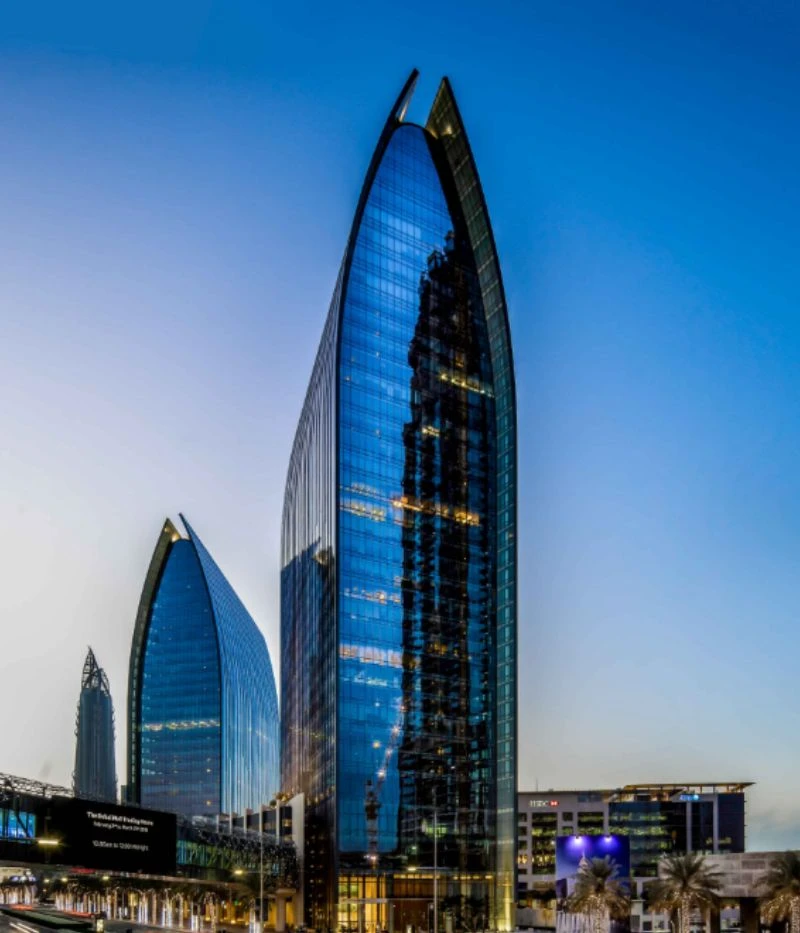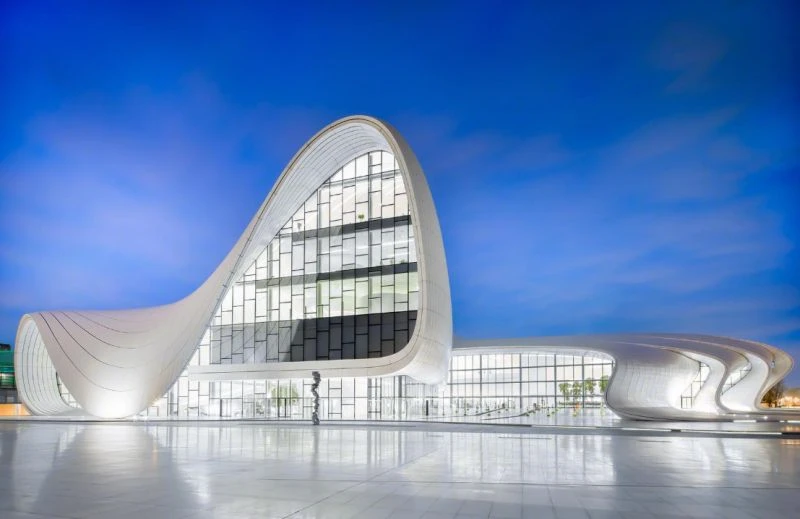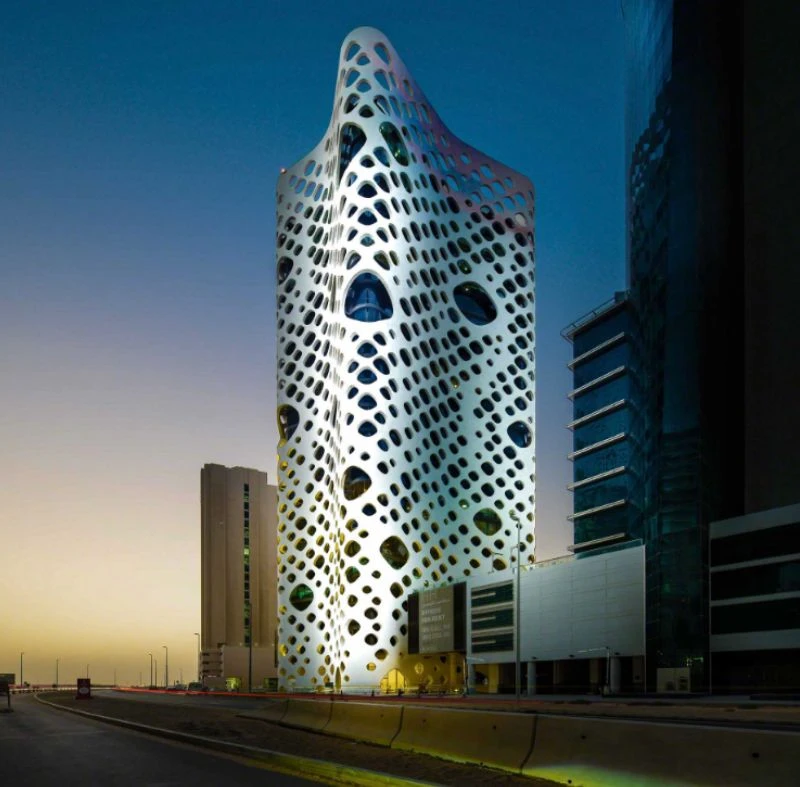Lifestyle - Interview

Interview with Architectural Photographer Terry Wier
Lifestyle - Interview
by Melisa Kaya
Architectural photography is a passion. As well as, a passion that you need to spend a long time to achieve success. Terry Wier became a professional photographer in 1971, and after five years of fashion photography experience, he established Terry Wier Photography in 1976. He always had a great respect for architects and buildings. When he finds an opportunity to step into architectural photography, he changed his career path in 1995 without losing any more time. And he has been photographing some of the most beautiful and prestigious buildings in the world for many years. I asked Terry Wier about the Importance of Photography in Architecture, the basics of photography, and his career.

London City Hall - photo by Terry Wier
Terry, before start talking about Architectural Photography, could you tell us about yourself? Who is Terry Wier?
I have been married to the love of my life, who is also a photographer, my entire working career. We have two wonderful children as well as other “sons and daughters” we have raised.
I have always traveled and it seems that I have spent the majority of my life making images. The subject matter changes, the countries and locations change but the desire to create with a visual language has remained the same. After several decades in the fashion world in NYC and Europe, I began to be drawn to architecture. I had always had a great respect for architects and world class buildings, but just never had the opportunity to act upon my attraction. When the door opened for me to work in that field, I was aware that it felt more natural than any work I had created before. I have always done landscape/fine art work and architecture seemed to fit into that world. To know one is to understand the other.
1971-1976
Dallas: Commercial Photography Studio
Jewelry, Food, Product, Fashion
1976-1995
NYC/Europe Fashion and Beauty Photography Studio
Art shows in NYC and LA
1995-Present
Dallas: Architectural Photography, Europe, Asia, and UAE
Fine Art Images: Installations in corporate environments as well as in private collections.

Ordos Museum, Mongolia - photo by Terry Wier
How did you decide to pursue a career in photography? What or who inspired you?
I was in art school in California and went to see a movie about David Bailey. The scene in the darkroom where he was making prints just set off an alarm in my mind. It just changed my direction from painting to photography. I left art school and was working for a photo studio within a year.
Could you tell us about Terry Wier Photography?
I believe that the images speak for themselves. Anyone who sees my work at www.terrywier.com will know that I have a great respect for architects and their work. I have traveled the world working on projects. I work in China, the Far East, Dubai/Abu Dhabi and the Middle East, Europe and of course all over the US.
There are many things that can be corrected in Photoshop, but you cannot fix a lack of respect or lack of passion in Photoshop. What I see in the digital image making world is a technical proficiency void in many cases of any passion. Architects spend years working on a building and deserve to have their efforts respected in the final images.
By this I mean that it is more than just a representation of a physical structure, every building has the DNA of the firm that created it. It takes time to truly discover the personality of a building. This is more than photographic tricks in post-processing, it is taking the time to wait for the perfect light, the perfect angle and the pursuit of the essence of the structure.
I believe that is what shows in my work, the pursuit of the essence of a structure with passion.

Lou Ruvo Center for Brain Health - photo by Terry Wier
How would you describe your photographic approach?
The first and most important element is to listen to the client. To truly understand what is important about the project to them. Then the walkthrough with the client to see what features are most important to them. Once I have a feeling for their view of the project then I can make plans to proceed with the photographic work.
What type of services do you offer to architecture firms?
We work on most commercial architectural projects worldwide. We also produce portraits of the firms' architects when needed.

Boulevard Plaza, Dubai - photo by Terry Wier
How long does it take to complete an average architectural project's full photo work?
Depends on the location of the building and the size. For sports stadiums for Populous, it was usually two days. For smaller projects such as hospitals or retail stores such as C&B only one day.
Which factors determine the project budget?
Generally it a constant rate by the day, the main cost factor is travel and in some cases, post-processing is a factor. (We had a hospital with MAJOR electrical lines and poles 6 feet in front of the building that had to be removed at the post.)
What is the most important component of a spectacular architectural photograph?
LIGHT, LIGHT, LIGHT then of course composition. Waiting for the perfect light is a major element for excellence. A lot of post production makes the building look like a CAD computer rendering not a photographic image. Overdone HDR is common, though unnecessary.

Center For Performing Arts, Beijing China - photo by Terry Wier
How does the work of a professional architectural photographer add value to the architectural project?
Professional architectural photography creates focus on the design by removing distractions and having perfect lighting. Some post production is necessary to remove elements that have nothing to do with the presentation of the project, but post-production should not be a replacement for great light.
To impress future potential clients for the architectural firm a polished but natural image creates great value for the firm. Decisions many times are made by an emotional reaction to visual presentation. Professional photography is essential toward this end.
Could you tell us about some of your architectural photography projects?
The exteriors section of my web portfolio is a visual list of my favorite projects. Photographing the PNC Pittsburg sports stadium for Populous during a game was really different. On the other end doing C&B projects in Dubai was a truly great experience. Both demanded different approaches but that is what makes my world so wonderful. It is always something different.

BMW Welt Munich Germany by Wolf Prix of Coop Himmelb(1)au - photo by Terry Wier
Do your equipment and project plan vary depending on the size of the building? What type of works do you prefer most, is it interior or exterior?
I love to work with both interior and exterior of a building. The complete story is the big draw for me. The equipment falls into the category of tools, I use what is necessary for the project. From the right lenses to a truck full of lights, they are just tools the space demands.

IAC building NYC, Frank Gehry - photo by Terry Wier
What are your expectations from your clients for a suitable shooting environment?
Information, information, information; that is the major expectation. I cannot read minds, I cannot know what parts of the project are most dear for them, so information is the key to a great relationship.
How do you protect the rights of your photographs in this online era?
My works are for the most part the major firms. Between their lawyers and my copyright protection software there is little that gets misused.

Guangzhou Opera House - photo by Terry Wier
Could your clients use the photographs in any publication, catalog, website, ad or other platforms in the future?
That all depends on the usage agreement and the client’s plans for the images. Usually, it is not a big issue to discuss.
Smartphones and affordable priced DSLR cams made everyone is more enthusiastic about photography. How did this affect the professional photography industry?
Generally, it has lowered the expectations and prices. When clients can send out the secretary on lunch break with an i-phone and get some kind of image of the building they don’t expect a lot and get used to the idea that photography is not worth much. So paying very little and getting poor images is not unusual.
I have seen many websites that show this mindset. However, for the serious firm dealing with major projects, this is not the case. Consider that the front doors of a building can run well over $20.000, the average daily rate is not even a consideration.

Lyon Franec St. Exupery by Santiago Calatrava - photo by Terry Wier
What advice would you give to photographers who want to pursue a career in architectural photography?
Today's market is flooded with photographers who are trying to get into the business. Architects are usually traditional and loyal. They will stick with a known supply chain as long as they can. Many times I am only called upon by a new client for my ability to work in foreign markets or because they needed more technical expertise for a very large project.
Once I get an opportunity I know that even if they love the work they may still go back to the person they are used to. Just goes with the business. They are not looking for “new” as much as dependable and known.
Starting out today it would be very hard to get a break unless you knew someone at a firm, or had a known trade magazine publish your work. The rates paid today are much less than before and you need a volume of work to make a business of it, unless you are at the top of the game. Therefore you see many wedding or commercial photographers have a architectural page on their website with just a few images. It has become a sideline. Just very hard segment of the market today.
What type of different solutions do you offer for different needs? Could you briefly tell us about your other services?
I am a specialist. I work on very large commercial projects that require a large specific tool set to complete. I leave the other parts alone except for portraits of the architects.

Heydar Aliyev Centre - Zaha Hadid Architects - photo by Terry Wier
What is your favorite photograph that you have ever taken?
That is such a hard question. I have done the work that I love for so long that my favorite would be at least two or three dozen buildings. I love modern design, Zaha Hadid, Frank Gehry, Mad Architect Firm, Kengo Kuma and so many more. If I had to pick one it would be hard. The Heydar Aliyev in Baku Azerbaijan by Hadid is one of the most beautiful from any angle.

photo by Terry Wier
What do you think about social media? How do you use it for your profession?
Social media is a mixed benefit resource in that it can waste a lot of time. It is moved on from Facebook and now from Twitter. Linkedin is more productive than the others for the architectural field. I use it but I am not absorbed by it. I can send out a communication in January and get a response in September. Like I said earlier, the architects are very loyal and consistent in their supply chain.
How can our readers follow Terry Wier?
When I am traveling a lot I try to use Twitter, however, I have been known to have periods where I am just to busy to log in. The best way to keep up is with my website, www.terrywier.com. I update the images with the newest projects when I can.
Anything you would like to add that I haven’t asked?
A quote from Zaha Hadid:
“I think about architecture all the time. That's the problem. But I've always been like that. I dream it sometimes.”
If you do not think about architectural photography all the time and even dream about it day and night, move on to your passion. It is just too much work to make it worth it otherwise.
As an example, I have flown twenty-two hours just to see and photograph a building for myself. I just love what I do.
Thank you Terry for this informative interview.
For more information, please visit website of Terry Wier
This interview was conducted in a Question-and-Answer format. The answers were checked for grammar and punctuation and published without any additional editing. Thursday, August 2, 2018. All photos are the property of their respective owners.